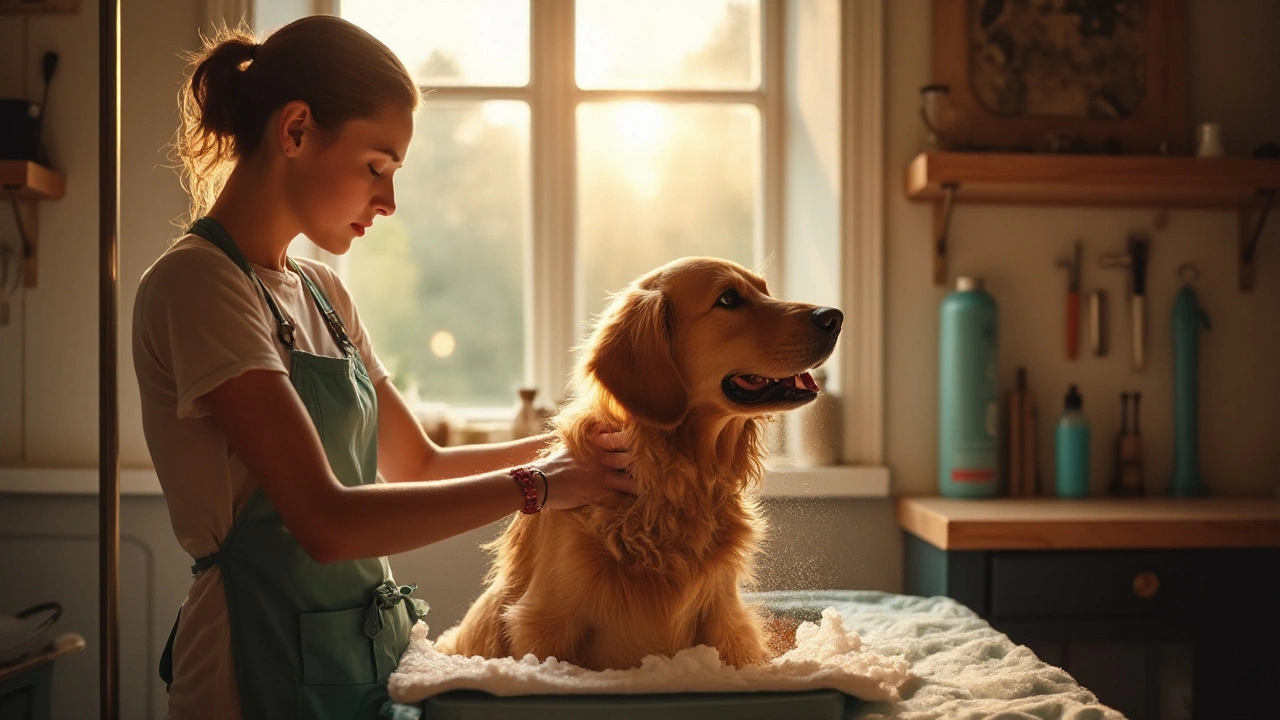Dog Grooming Process: Simple Steps for a Happy, Clean Pup
Got a shaggy dog that needs a tidy‑up? You don’t have to be a pro to give your pup a solid grooming session. Follow this plain‑spoken guide, and you’ll see why regular grooming keeps dogs healthier and happier.
Step‑by‑Step Grooming Guide
1. Brush out the coat. Start with a slicker brush or comb, depending on your dog’s fur type. Work from the skin outward, loosening mats before they become stubborn. A quick brush removes loose hair, dirt, and pretends you’re giving a mini‑massage.
2. Decide on a bath. Many owners wonder if a bath should happen before or after brushing. The short answer: a light brush first, then a quick bath if the coat is dirty. A full‑body soak works best after the initial brush because you’ll remove more debris and the water spreads easier.
3. Use the right shampoo. Choose a dog‑specific, pH‑balanced formula. Human shampoo can dry out skin, while medicated options help with itching. Lather gently, avoid the eyes, and rinse thoroughly to prevent residue.
4. Dry and check for problem spots. Towels absorb most water, then a low‑heat dryer finishes the job. While the coat is damp, look at ears, eyes, and paws. Clean any wax buildup, wipe away eye discharge, and trim long fur around the pads to stop slipping.
5. Trim nails and tidy the face. If the nails click on the floor, they’re too long. Use a dog nail grinder or clipper, taking small cuts to avoid the quick. Trim any stray hair around the face, especially under the eyes, for a neat look.
6. Reward and finish. A treat or a game right after grooming tells your dog that good things follow the routine. This positive association makes future sessions smoother.
Common Grooming Questions Answered
Many owners ask, “Should I bathe my dog before grooming?” The answer depends on how dirty the coat is. If it’s just a little muddy, a quick brush and spot clean will do. For heavy mud or a strong odor, a full bath before the final brush is best.
Another frequent worry is “How often should I groom my dog?” Short‑haired breeds usually need a brush once a week, while long‑haired dogs may need daily combing. Baths every four to six weeks keep skin healthy without stripping natural oils.
Some dog lovers wonder about the right tools. A pin brush works for most medium coats, a slicker brush handles thick undercoat, and a de‑shedding tool helps with seasonal shedding. Investing in a quality set saves time and avoids pulling hair.
If you’re nervous about cutting fur yourself, start with the easy parts—brushing, ear cleaning, and nail trimming. For breeds that need a full haircut, consider a professional groomer for the first few sessions. Watching a groomer can teach you technique and confidence.
Finally, remember that grooming isn’t just about looks. Regular brushing distributes natural oils, reduces matting, and lets you spot skin issues early. A clean coat also keeps your home free of excess hair.
Follow these steps, keep a few basic tools on hand, and you’ll turn grooming into a quick, low‑stress routine. Your dog will feel better, look sharper, and you’ll enjoy a fresher home—all without a pricey salon visit.
- Morgan Ainsworth
- 0 Comments
Comprehensive Dog Grooming: What to Expect
Grooming is a crucial aspect of a dog's health and well-being. This article delves into the various components of full dog grooming, including bathing, fur trimming, nail clipping, ear cleaning, and dental care. It offers tips for choosing the right groomer, understanding different grooming techniques, and preparing your pet for their grooming sessions. From maintaining cleanliness to ensuring a shiny coat, discover the essential elements that contribute to a happy and healthy pup.
View More
